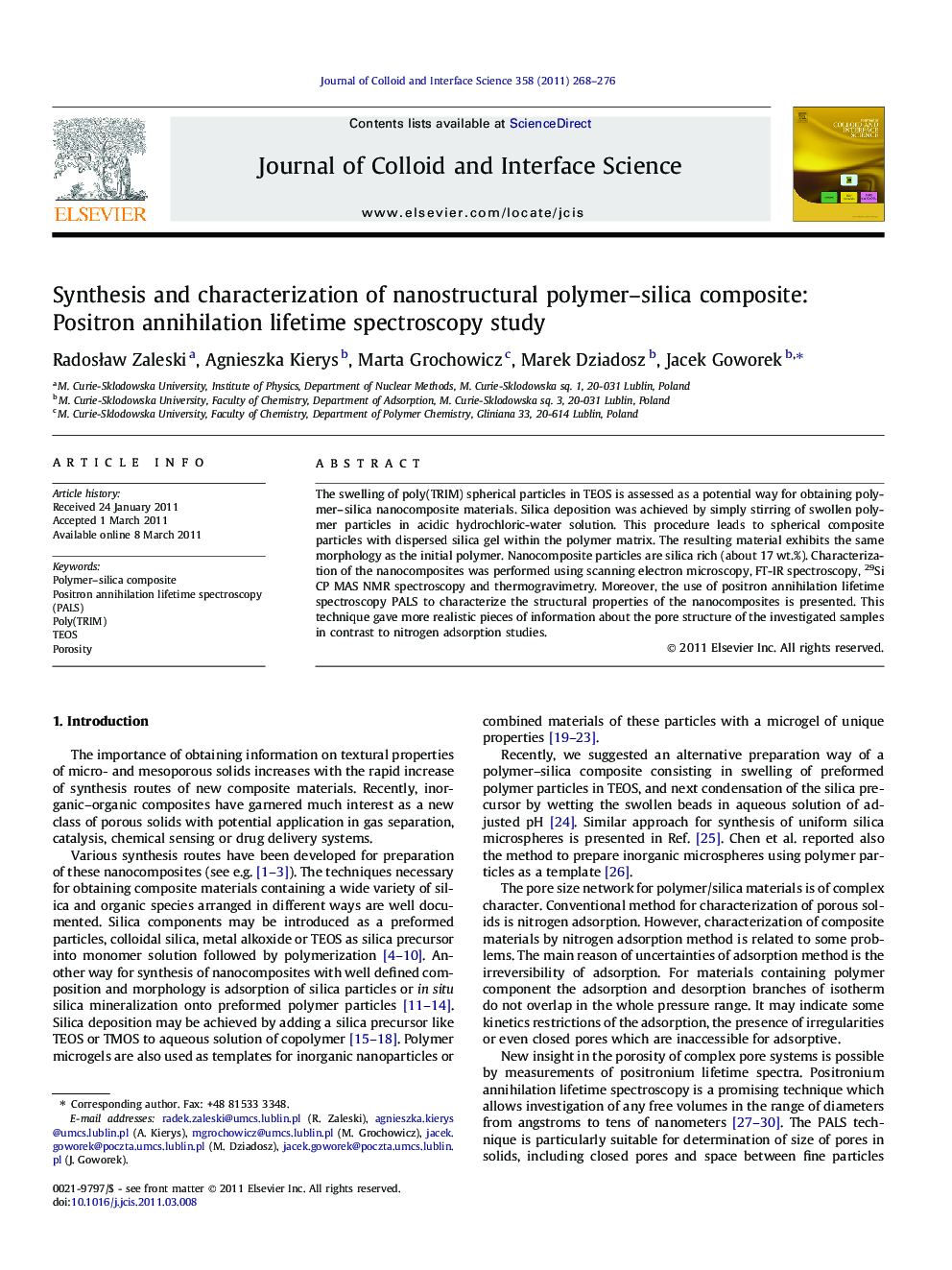| Article ID | Journal | Published Year | Pages | File Type |
|---|---|---|---|---|
| 608657 | Journal of Colloid and Interface Science | 2011 | 9 Pages |
The swelling of poly(TRIM) spherical particles in TEOS is assessed as a potential way for obtaining polymer–silica nanocomposite materials. Silica deposition was achieved by simply stirring of swollen polymer particles in acidic hydrochloric-water solution. This procedure leads to spherical composite particles with dispersed silica gel within the polymer matrix. The resulting material exhibits the same morphology as the initial polymer. Nanocomposite particles are silica rich (about 17 wt.%). Characterization of the nanocomposites was performed using scanning electron microscopy, FT-IR spectroscopy, 29Si CP MAS NMR spectroscopy and thermogravimetry. Moreover, the use of positron annihilation lifetime spectroscopy PALS to characterize the structural properties of the nanocomposites is presented. This technique gave more realistic pieces of information about the pore structure of the investigated samples in contrast to nitrogen adsorption studies.
Graphical abstractSEM micrograph of poly(TRIM)–Si composite bead after swelling in TEOS followed by its condensation.Figure optionsDownload full-size imageDownload high-quality image (53 K)Download as PowerPoint slideHighlights► Polymer–silica composite by swelling in TEOS. ► Calcination of composite gives the silica particles of spherical morphology porosity investigations by positron annihilation lifetime spectroscopy. ► Adsorption method and positronium annihilation lifetime spectroscopy (PALS) are compared.
